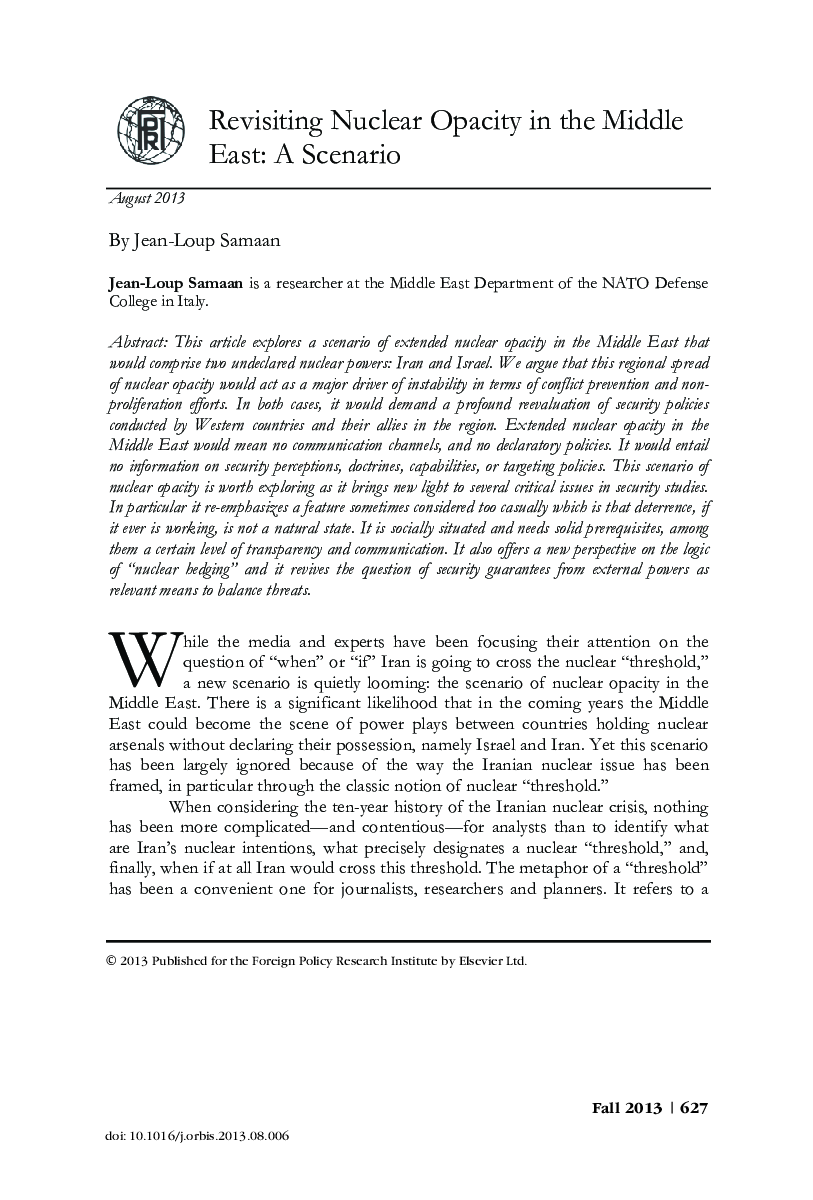| Article ID | Journal | Published Year | Pages | File Type |
|---|---|---|---|---|
| 1127558 | Orbis | 2013 | 16 Pages |
This article explores a scenario of extended nuclear opacity in the Middle East that would comprise two undeclared nuclear powers: Iran and Israel. We argue that this regional spread of nuclear opacity would act as a major driver of instability in terms of conflict prevention and non- proliferation efforts. In both cases, it would demand a profound reevaluation of security policies conducted by Western countries and their allies in the region. Extended nuclear opacity in the Middle East would mean no communication channels, and no declaratory policies. It would entail no information on security perceptions, doctrines, capabilities, or targeting policies. This scenario of nuclear opacity is worth exploring as it brings new light to several critical issues in security studies. In particular it re-emphasizes a feature sometimes considered too casually which is that deterrence, if it ever is working, is not a natural state. It is socially situated and needs solid prerequisites, among them a certain level of transparency and communication. It also offers a new perspective on the logic of “nuclear hedging” and it revives the question of security guarantees from external powers as relevant means to balance threats.
